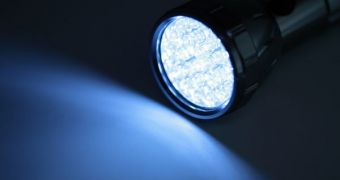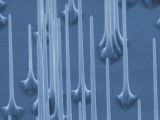LEDs have been in our lives for some time now. They are more efficient than any other lighting device before them, can produce any desired color and have a life span much longer than that of light bulbs and fluorescent tubes. However, they are still imperfect. For example, light-emitting diodes currently present on the market give off a harsh glow of light, mostly due to the fact that they are not able to correctly filter several frequencies of the light spectrum emitted during operation.
"We can really make the three colors - red, green and blue - with this technology and get warm LEDs," said professor Lars Samuelson from Lund University, the developer of a new LED production technology which implies the use of nanowires to make LEDs more 'perfect'. Produced through this process, LEDs will no longer cast harsh light and could become more efficient and longer-lasting than the previous ones.
The traditional light-emitting diode manufacturing process involves the use of multi crystalline semiconductor layers to convert the electrical current into light. By doing so, they are able to achieve an efficiency of up to 30 percent, while light bulbs and fluorescent tubes have efficiencies of only 4 respectively 25 percent. Have you ever wondered why LEDs come so small? I mean why don't they make them into light bulb-size devices?
As it turns out, the fabrication process is again to blame. Defects in the semiconductor crystalline structure would grow with the scaling up, thus limiting their efficiency. "Even the commercial LEDs you buy today for your flashlight, for instance, have 10 million defects per square centimeter," said Samuelson.
Nanowires come into play
Samuelson reveals that by creating thin nanowires of the gallium arsenide and indium gallium phosphate semiconductor, a 'highly perfect structure' can be created. The semiconductor would be covered by millions of nanowires 2 micrometers high and 200 nanometers in diameter, which would enhance the efficiency of the device by 50 percent or more.
Not only they would outperform and outlive the previous LED designs, but the nanowire LEDs can produce even brighter light emissions and emit light more easily in the medium. The problem of harsh light can be easily treated by altering the concentration of elements into the semiconductor structure.
Although Samuelson's research has been funded by the European Union, he is also involved in a start-up company which is supposed to create large-scale LEDs in less than three years, to be used in multiple lighting applications.
Alternatively, doctoral student in electrical, computer and systems engineering Martin Schubert has presented a few months ago a way to make LEDs emit more 'natural' light by polarizing the emitted light, however Schubert's design appears to have no relevance in improving the efficiency of future light emitting diodes.

 14 DAY TRIAL //
14 DAY TRIAL // 
